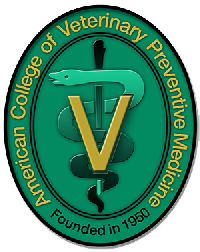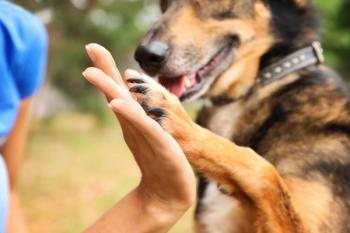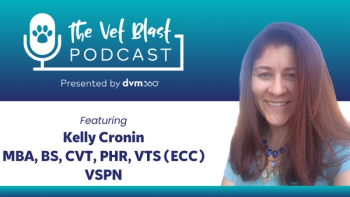
- dvm360 December 2023
- Volume 54
- Issue 12
- Pages: 62
Loan repayment program aids veterinarians in shortage areas

The financial assistance is provided through the National Institute of Food and Agriculture
The National Institute of Food and Agriculture (NIFA) is a relatively new organization established within the US Department of Agriculture in 2009 as part of the 2008 Farm Bill. Its mission is to find innovative solutions to challenging problems facing agriculture. It does this in collaboration with scientists in the United States and around the world, contributing to discussions and establishing new science-based policies.
One of NIFA’s many roles is to administer the Veterinary Medicine Loan Repayment Program (VMLRP). NIFA enters into direct agreements with veterinarians in shortage situations to provide financial loan repayment assistance up to $25,000 per year for a predetermined period. It is a contract, not a grant, and requires that the awardee commit at least 3 years of service to the shortage situation. Between 2010 and 2022, more than 600 veterinarians have been awarded contracts through the VMLRP. The maximum award amount of $75,000 must be applied to either government or commercial loans taken while the veterinarian was in veterinary school. The veterinary college must have been a school approved by the American Veterinary Medical Association with a DVM or equivalent degree. The veterinarian must also be established in a practice within the designated shortage area at least 90 days following the award. Veterinarians who have existing federal liens or are obligated with work agreements within governmental organizations are ineligible for the program. Similarly, veterinarians who do not have the minimum threshold of at least $15,000 of debt burden are ineligible to apply for this program. Because the VMLRP contracts are not grants, the designation and review process is unique and includes a review of a personal resume as well as financial records.
Each year, designated shortage situations can be nominated by a state animal health official (SAHO) or their designee. These shortage descriptions are reviewed by an external panel of food animal veterinarians and the nominations are approved and published for applicants. NIFA awards the maximum number of shortage situations possible using the data from the National Agriculture Statistics Service to support its review of shortage situations. Shortages are divided into 3 categories as follows:
- Those shortages that may or may not be in rural areas, requiring a minimum of 32 hours devoted to the shortage work description, and are specific for a private practice.
- Those in private practice but also in a rural area and requiring a minimum of 12 hours devoted to the shortage work description.
- Those shortages that are for public practice and require a minimum of 19.6 hours dedicated to the shortage work description.
The SAHO can increase the requirements beyond the minimum standard that NIFA sets.
At the beginning of each application cycle, a request for applications is advertised. Applicants can access the VMLRP website and find the shortage descriptions that may apply to them, the total dollar amount for the award in the competition areas, and important application deadlines. The total dollar amount is determined by the amount appropriated by congressional funds each year and the cutoff amount may change based on the availability of such funds. Unless otherwise noted, each shortage situation is limited to 1 awardee and not all shortage situations are filled. In some special situations, an award may be split by 2 equivalent veterinarians in 1 shortage area.
In public practice, awards cannot exceed 10% of the overall funding award cutoff, to prioritize private food animal practice. This is a competitive process, and each application is reviewed by a panel of peers selected by NIFA. These panels are trained to review the applications uniformly and must disclose any possible conflicts of interest, and it is for that same reason that panelists do not live in the same state as the applicants that they review. Applications should include references, resumes, and a written statement describing how the applicant will meet the shortage situation as posted by the SAHO.
Despite NIFA’s ongoing efforts to support this nationwide problem, access to veterinary care in agriculture and rural communities continues to be one of the largest problems cited by producers. Those graduates and current veterinarians serving or considering food animal practice or mixed practice should be encouraged to seek financial support by applying for the VMLRP and see whether they qualify for assistance. This is an excellent way to help increase access for producers to veterinarians by giving incentive for veterinarians to consider career paths serving agriculture.
NIFA will be hosting a listening initiative for stakeholders on January 24, 2024. Questions and comments will be considered at that time and can be submitted. The next application cycle is expected to open in March 2024. For more information, please visit the VMLRP
”A pocket of prevention” is a recurring column brought to you by the American College of Veterinary Preventive Medicine (ACVPM). The ACVPM is an American Veterinary Medical Association-recognized veterinary specialty organization offering board certification in preventive medicine with the option of a specialty in epidemiology. Becoming a diplomate of the ACVPM means joining some of the most distinguished veterinary professionals in preventive medicine and public health at national and international levels. For more information, go to acvpm.org.
Articles in this issue
about 2 years ago
Culture 101: Creating a healthy practice environmentabout 2 years ago
Nonpharmacologic management of canine osteoarthritis: Part 2about 2 years ago
Cytology for 3 common dermatological tumorsabout 2 years ago
Talking politics in the clinicabout 2 years ago
Top Vet Blast Podcast episodes of 2023: #1about 2 years ago
Top dvm360 articles of 2023: #1about 2 years ago
Top Vet Blast Podcast episodes of 2023: #2about 2 years ago
Top dvm360 articles of 2023: #2about 2 years ago
Digital cytology in the veterinary officeabout 2 years ago
Top Vet Blast Podcast episodes of 2023: #3Newsletter
From exam room tips to practice management insights, get trusted veterinary news delivered straight to your inbox—subscribe to dvm360.





